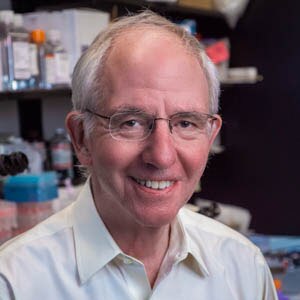Laboratory of Cellular & Developmental Biology
Lab Sections & Chiefs
-
Gene Regulation and Development Section
Ann Dean, Ph.D. -
Mammalian Developmental Biology Section
Jurrien Dean, M.D., NIH Distinguished Investigator -
Molecular Mechanisms of Development Section
Alan R. Kimmel, Ph.D. -
Section on Regulatory RNAs
Katherine McJunkin, Ph.D.
Gene Regulation and Development Section
Ann Dean, Ph.D., Section Chief
The Gene Regulation and Development Section studies how enhancers activate transcription in a cell and developmental stage specific fashion. Research focuses on erythropoiesis and on regulation of mouse and human beta-globin gene families by a complex enhancer, the locus control region (LCR). We use biochemistry, genetics, genomics, and computational approaches in cell lines, embryonic stem cells, and mice to (1) identify lineage specific proteins involved in chromatin looping between enhancers and genes, (2) investigate the role of long non-coding RNAs in enhancer function, and (3) determine how chromosome folding and enhancer long range interactions mutually influence each other. The studies contribute to gene therapy efforts by revealing the complex interplay between genes and their modulators in the nucleus.
Mammalian Developmental Biology Section
Jurrien Dean, M.D., NIH Distinguished Investigator, Section Chief
The Mammalian Developmental Biology Section investigates gametogenesis and pre-implantation development in mice. Research emphasizes molecular mechanisms that define formation of sperm and eggs, the maternal to embryonic transition and early development prior to implantation. We develop models and test their predictions with gene-edited mice using large data sets and sophisticated molecular biology. One investigative focus is on genetic hierarchies that control oogenesis and spermatogenesis. Another is on the molecular basis of sperm-egg recognition that results in monospermic fertilization. Lastly, we investigate activation of the embryonic genome and the development of cell lineages as the embryo transits through the female reproductive tract.
Molecular Mechanisms of Development Section
Alan R. Kimmel, Ph.D., Section Chief
The Molecular Mechanisms of Development Section investigates molecular processes required for establishing a terminally differentiated organism from a homogeneous population of totipotent cells. Work in the section focuses on receptor-mediated signal transduction pathways, as well as nuclear targets to identify mechanisms that specify multicellular differentiation, developmental cell fate, and pattern formation. Approaches include genetic screens, cell imaging, biochemical assay, and deep sequencing with computational analyses. Recent data have defined novel regulatory pathways for mTOR, tyrosine kinase, and presenilin signaling, and demonstrated an essential role for gene-specific chromatin remodeling for developmental induction.
Section on Regulatory RNAs
Katherine McJunkin, Ph.D., Section Chief
Research in the McJunkin lab has two major long-term goals: 1) to define the biological functions of miRNAs during embryogenesis and 2) to elucidate mechanisms of miRNA turnover. Using C. elegans as a model organism to address these questions, we combine the strengths of classical forward genetics with CRISPR-Cas-9-mediated genome editing, next-generation sequencing, cell biology, and biochemical techniques. Because embryonically-expressed miRNAs exhibit a sharp decrease in abundance at the end of embryogenesis, our efforts to simultaneously study the biology of these miRNAs and the mechanisms of miRNA decay has the potential to uncover regulatory modules that couple miRNA decay to developmental timing.


